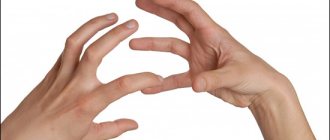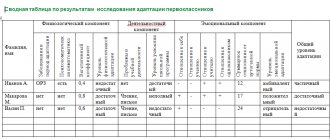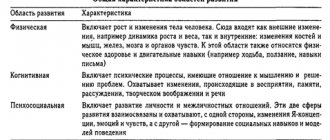Every person, individual is part of a system of social relationships. People by their nature could not live alone, so they unite in groups. Often, conflicts of interest, situations of rejection, alienation and other issues arise that can interfere with fruitful activities. The sociometric method in sociology is an effective means of identifying such problems. It has been tested several times, and with its help you can quickly establish existing relationships and characterize them. The sociometric method was created by J. L. Moreno, an American scientist, researcher of the nature of human group relations.
Definition of the sociometric method
There are several approaches to defining this concept. Firstly, the sociometric method is a system for diagnosing emotional ties, relationships or mutual sympathy between members of the same group. In addition, in the process of research, the degree of disunity-cohesion of the group is measured, signs of sympathy-antipathy of community members in relation to authorities (rejected, leaders, stars) are revealed. Led by informal leaders, intra-group cohesive formations (informal groups) or closed communities are established, positive, tense or even conflictual relationships, and their specific motivational structure. That is, in the course of studying a group, not only the qualitative, but also the quantitative side of the preferences of group members identified in the test is taken into account.
Secondly, the sociometric method of personality research also denotes an applied direction, including the use and improvement of special tools in solving practical problems.
Procedure according to Moreno's recommendations
In the classic version of Moreno’s “Sociometry” method, the study is carried out according to the following plan:
- Determining the goals and objectives of the study, as well as the group for study. As for the goals, this could be research into personal or business relationships, emotional background, or the team’s attitude to some current problem (for example, analysis of an industrial accident).
- Development of main provisions and hypotheses for the survey.
- Refusal of anonymity - otherwise the research results will be ineffective.
- Refusing the call to publicly talk about likes and dislikes. Handing out cards with questions is much more effective. Otherwise, people may refuse to participate in the study altogether.
- Each participant must answer prepared questions.
- You cannot violate anonymity and tell participants who chose whom. In rare cases, if a clear conflict is identified, then you can then invite the conflicting parties to talk one-on-one in the presence of a mediator.
- It is not recommended to allow participants to communicate during the research process, but they can look at each other. Visual contact should not be prevented.
If the specifics of the group allow, then the sociometry technique can be carried out orally, that is, directly ask questions to each of the participants. However, you need to be prepared for the fact that at the same moment a conflict may flare up and a misunderstanding may arise between the participants. If you want to organize an oral research, then you need to know the basics of conflictology.
Important! If you think that the results of the study using the sociometry technique were erroneous, that one of the participants gave false answers, then you can conduct the survey again. In addition, you can conduct diagnostics repeatedly to monitor the effectiveness of corrective measures.
The origin and development of the sociometric experiment
The sociometric method was created in the 30s. XX century American psychiatrist and sociologist J.L. Moreno, he also introduced the concept of “sociometry,” which means measuring the dynamics of interpersonal relationships between members of one group. According to the author himself, the essence of sociometry lies in the study of the internal structure of social groups, which can be compared with the nuclear nature of an atom or the physiological structure of a cell. The theoretical foundations of the sociometric method are based on the fact that every aspect of social life - political, economic - is easily explained by the state of emotional relationships between individuals. Specifically, this can be expressed in people’s manifestations of antipathy and sympathy for each other. That is, the author of the sociometric method believed that changes in psychological relationships in small groups directly affect the entire social system. Today this method has many modifications.
Bulgarian sociologist L. Desev identified three areas of research in which sociometric methods are used:
- Dynamic or “revolutionary” sociometry, the subject of study of which is the group in action (J. L. Moreno and others).
- Diagnostic sociometry, which classifies social groups (F. Chapin, J. H. Criswell, M. L. Northway, J. A. Landberg, E. Borgardus, etc.).
- Mathematical sociometry (S. C. Dodd, D. Stewart, L. Katz, etc.).
Soviet psychologists who made a great contribution to the implementation of this method were I. P. Volkov, Ya. L. Kolominsky, E. S. Kuzmin, V. A. Yadov and others.
According to Ya. L. Kolominsky, the psychological basis for the study of relationships is the knowledge that the desire of one person for another comes from the desire to be closer to the object of affection. Moreover, expression in verbal form should be recognized as a significant real indicator of not only understanding, but also the overall presence of a need in a person.
Description of the technique
Sociometric measurement method
or
Sociometry
is used to diagnose interpersonal and intergroup relations in order to change, improve and improve them. With the help of sociometry, you can study the typology of social behavior of people in group activities, judge the socio-psychological compatibility of members of specific groups. The founder of sociometry is the famous American psychiatrist and social psychologist Jacob Moreno.
The method of sociometric measurements allows you to obtain information about:
- socio-psychological relations in the group;
- the status of people in the group;
- psychological compatibility and cohesion in the group.
In general, the task of sociometry is to study the unofficial structural aspect of a social group and the psychological atmosphere prevailing in it.
Meaning of the method and scope
The sociometric method of studying small groups and teams is used by sociologists and psychologists in schools, universities, enterprises and organizations, sports teams and other associations of people to diagnose interpersonal relationships. For example, the results of such research are of great importance in establishing the psycho-emotional compatibility of crews of spaceships and Antarctic expeditions.
The sociometric method of group research, according to A. V. Petrovsky, is one of the few ways to analyze interpersonal relationships in a small team, which are often hidden. At the present stage of scientific socio-psychological research, creativity is manifested, aimed at studying this subject with new techniques. Subsequently, the development of such methods and their use in conjunction with other methods will significantly expand the capabilities of sociology and psychology in the analysis of small groups. The role of a small group for society cannot be underestimated. It accumulates social relations as a whole and transforms them into intra-group ones. This knowledge contains an important element of social management, built on a scientific basis.
Definition of the concept
Sociometry is a method aimed at studying business, personal, emotional, and communicative relationships in a group. Who developed the method and methodology of sociometry? The author of the sociometry method is psychiatrist, psychologist and sociologist Jacob (Jacob) Levi Moreno. The year of discovery and dissemination of the method is 1894. Sociometry by J. Moreno is a diagnostic method and involves identifying likes and dislikes, actual or potential conflicts within a team.
The concept of “sociometry” can be considered in a narrow and broad sense. In a narrow sense, this means a technique for studying intragroup connections and hierarchy within a group. In a broad sense, this refers to a theory about the measurement of interpersonal relationships. We will talk about the latter in more detail in another article, and in this publication we will consider the diagnostic methodology, although both the direction of sociometry itself and the study technique are associated with the name of one person - J. Moreno.
Note! Since its creation, the Sociometry method has undergone a number of changes. Among domestic psychologists, Ya. L. Kolominsky, I. P. Volkova, E. S. Kuzmina, V. A. Yadova studied it. Nowadays, the original version of the sociometry technique is rarely found, but here we will consider it.
Characteristics of the sociometric method
Research of this kind makes it possible to improve relationships in any team. But at the same time, this is not a completely radical method of resolving the internal problems of a group, so most often they should be looked for not in the antipathy or sympathy of group members for each other, but in deeper sources.
The sociometric research method is carried out in the form of asking indirect questions, answering which, the respondent makes a choice of specific members of his group whom he would prefer to others in a certain situation.
Individual or group testing options are available. This depends on the age of the subjects and the content of the tasks. But, as a rule, the group form of research is more often used.
In any case, the sociometric method in studying a group makes it possible to establish the dynamics of intra-group relations in a short period of time, in order to subsequently apply the results obtained in order to restructure groups, strengthen their cohesion and the effectiveness of interaction.
Forms of conducting
In Moreno’s original theory, there is only one form of sociometry methodology – a written survey. It is recommended to limit the number of elections, for example, in a group of 30 people, the sample per situation should be no more than five, that is, questions about replacing the leader can be repeated a maximum of 4 times. In Moreno's theory, this is called the "sociometric limit" or "election limit."
On average, a group of 25-35 people should have 4-5 questions (elections). However, this form of conduct is acceptable when participants rank all remaining members of the group according to the stated criterion. This method allows you to get the most accurate picture of the hierarchy in the group, but in terms of calculating the results, this form is more complicated.
The entire study takes no more than 15 minutes. The presenter distributes pre-prepared cards to the participants and then collects them. The participants go home, and the presenter processes the results. Later, the study organizer invites all participants or individual members of the group to meet again to discuss the diagnostic results using the sociometry method.
Preparing for the study
The sociometric method does not require much effort or time to carry out. The research tools are a sociometric survey form, a list of group members, and a sociomatrix. A group of people of any age can be studied: from preschool to seniors. The sociometric method of studying preschoolers can be applicable, since already at this age children receive their first experience of communication and interaction. The criteria for sociometric choice are formed based on the problems that are solved during the study and the age, professional or other characteristics of the group being studied. The criterion is, as a rule, a certain type of activity, and in order to perform it, the individual will need to make a choice, that is, to reject one or more members of his group. It represents a specific question from a list. The choice situation during the survey should not be limited. It is welcome if the applied criteria are of interest to the employee: they must describe a specific situation. According to the content, the test criteria are divided into formal and informal. Using the first type, you can change the relationship to the joint activity for which the group was created. Another group of criteria serves to study emotional and personal relationships that are not related to joint activities and the achievement of a common goal, for example, choosing a friend to spend free time with. In the methodological literature they can also be called production and non-production. The criteria are also divided according to their orientation: positive (“Which group member would you like to work with?”) or negative (“Which group member would you not want to work with?”). The sociometric method assumes that a questionnaire, which contains instructions and a list of criteria, is created after their formulation and selection.
The list of questions is adapted taking into account the characteristics of the group being studied.
Sociometric card
A sociometric card is made at the final stage of the study. It is needed to determine the opinion of each group member on specific criteria, for example, about working shoulder to shoulder, holding entertainment events, corporate events, etc. Survey participants answer questions that are drawn up depending on the developed program of the study and the type of team participating in the study . This could be a production site, leisure associations, temporary teams, stable groups.
If such a sociometric question according to J. Moreno is carried out without significant restrictions, then after the question there is enough space on the card for complete answers. Under the restriction conditions, they set the number of columns allowed for the answer of a sociometry participant.
Preliminary stage of the survey
The sociometric research method is carried out in an open form, therefore, before the survey begins, it is necessary to instruct the group. This preliminary stage aims to explain to the group the importance of the study, point out the significance of the results for the group itself, and tell how it is necessary to carry out tasks with attention. At the end of the briefing, it is important to emphasize that all answers from group members will be kept confidential.
Approximate contents of the instructions
The text of the instructions may have the following content: “Since you were not well acquainted with each other, absolutely all your wishes could not be taken into account when forming your group. At the moment, the relationship has formed in a certain way. As for the purpose of the study, its results will be beneficially taken into account by your management when organizing the team’s activities in the future. In this regard, we ask you to be extremely sincere when giving your answers. The study organizers guarantee that individual responses will be kept confidential.”
Sociometric research method: procedure
There are some criteria regarding the numerical composition of the team being studied. The number of group members at which the sociometric method works should be 3-25 people. However, examples of studies were noted that allowed the involvement of up to 40 people. The sociometric method of studying interpersonal relationships in a group (work collective) can be used provided that the work experience in it exceeds six months. An important component of preparation is establishing a trusting atmosphere with the group. Otherwise, distrust of the experimenter and suspicion that answers to questions can be used to harm the respondent can lead to refusal to complete tasks or giving false answers. It is important that the research is not carried out by a person related to the team: a leader or a person belonging to the group. Otherwise, the results will not be reliable. It is also worth mentioning the invalid answer options that may be used. For example, when making a positive choice, a respondent is embarrassed to leave other group members out of the list, so he can, guided by this motive, say that he “chooses everyone.” In this regard, the authors and followers of sociometric theory resorted to an attempt to partially change the survey procedure. Thus, instead of a free number of group members for given options, respondents could be assigned a strictly limited number. Most often it is three, less often four or five. This rule is called the “election limit”, or “sociometric restriction”. It reduces the likelihood of chance, facilitates the task of processing and interpreting information, and forces survey participants to approach their answers more adequately and thoughtfully.
When the preparatory activities have been carried out, the survey procedure begins. Each member of the group must take part in the sociometric research method. The subjects write down the names of the group members who were selected by them according to one or another criterion, and indicate their data on the questionnaire. Thus, the survey cannot be anonymous, since it is under these conditions that it is possible to establish relationships between team members. During the study, the organizer is obliged to ensure that respondents do not communicate with each other and regularly remind them that all questions must be answered. There is no need to rush subjects in answering questions.
However, if they don't have a list of group members in front of them, they can allow eye contact. For greater convenience and to eliminate inaccuracies, the names of those absent can be written on the board.
The following selection methods are acceptable:
- Limit the number of choices to 3-5.
- Complete freedom of choice, that is, the respondent has the right to indicate as many names as he sees fit.
- Ranking of group members depending on the proposed criterion.
The first method is more preferable, but only from the point of view of convenience and simplicity in subsequent processing of the results. The third is from the point of view of the validity and reliability of the results. The ranking method eliminates the tension that may arise when selecting group members based on negative characteristics.
After the sociometric survey cards are completed, they are collected from group members and the mathematical processing procedure begins. The simplest methods of quantitative processing of research results are graphical, tabular and indexological.
Preliminary work
Social status, age, gender of the participants - all this is unimportant. The main thing is that people must be united by something, that is, be a group. This could be a class, a work team, a group of friends, a family, a club, a sports team. The first preparatory stage is to gather these people in one place.
The second preparatory stage in the sociometry method is to explain to participants the significance of the study, its goals and objectives. In addition, it is important to emphasize that the sincerity and openness of the participants will significantly simplify the procedure and allow achieving the most accurate results. Explain that the well-being of each participant depends on the socio-psychological climate in the team, and vice versa.
The third important preparatory stage of the sociometry technique is the determination of the criterion for selecting likes and dislikes. This criterion is the basis of diagnostic questions. The choice of criterion depends on the objectives of the study. What we are considering: business or personal relationships, emotionality, moral climate, etc. The criterion is the type of activity regarding which participants will choose likes and dislikes. I propose to look in more detail using examples.
If you want to determine, using sociometry techniques, informal leaders in a team and the team’s attitude towards official leaders, then the following list of questions will do:
- Who do you see as the leader of the team, who would you put first at the head of management?
- And if choosing the first person is impossible, then who would you replace him with?
- Who would you choose to lead if the first two candidates are unavailable?
- Who would you never make a team leader?
Example of questions for studying personal relationships:
- Who will you turn to first for help?
- Who would you never turn to for help?
- Who would you never help?
- Who would you happily go on a long business trip with?
- Who would you never take with you on a business trip?
And this is an example of what questions you can ask schoolchildren in order to identify all the features of interpersonal relationships:
- Imagine that you and your whole class went on a trip. Who would you appoint as captain of the ship?
- Who from your class would you not like to see on the captain's bridge?
- In the evening, a festive dinner awaits you. Who would you like to sit at the same table with?
- Which classmate do you absolutely not want to go to a holiday dinner with?
The “Sociometry” method was developed by J. Moreno with the aim of assessing the nature of interpersonal relationships in a group, studying the model of social behavior of people in the process of group activities, and assessing the psychological compatibility of team members.
Options for processing and interpreting the results obtained
During the study, one of the tasks is to determine the sociometric status of an individual in a group. It means the ability of an individual to occupy one or another position in the structure under consideration (locus), that is, to relate in a specific way to the rest of the team.
- Drawing up a sociomatrix. It is a table in which the results of the survey are entered, namely: positive and negative choices made by members of the group being studied. It is built according to the following principle: horizontal rows and vertical columns have equal numbers and are numbered according to the number of group members, that is, in this way it is indicated who chooses whom.
Depending on the selection criteria, single and summary matrices can be constructed showing selections based on several criteria. In any case, a complete picture of the relationships in the group can be presented by analyzing the sociomatrix for each criterion.
Mutual elections are drawn in a circle; if the reciprocity is incomplete, then in a semicircle. Or the intersection of columns and rows is marked with a “plus” sign in case of a positive choice or a “minus” sign if it was negative. If there is no choice, then 0 is entered.
The main advantage of the matrix is the ability to present all results in numerical form. This will ultimately make it possible to rank group members according to the number of choices received and given, and to determine the order of influences in the group.
The number of elections received is called the sociometric status of the group, which can be compared with the theoretically possible number of elections. For example, a group consists of 11 people, the number of possible choices will be 9, therefore 99 is the number of theoretically possible choices.
However, in the overall picture, what matters is not so much the number of elections as each respondent’s satisfaction with his position within the group. Having the data, you can calculate the satisfaction coefficient equal to dividing the number of mutual positive choices of the individual. So, if one of the group members strives to communicate with three specific people, but none of them chose him during the survey, then the satisfaction coefficient CG = 0:3 = 0. This indicates that the respondent is trying to interact with the wrong people. who it should be.
- Group cohesion index. This sociometric parameter is calculated by dividing the sum of mutual choices by the total number of possible ones in the group. If the resulting number is in the range of 0.6-0.7, then this is a good indicator of group cohesion. That is, the sociometric method in the study of a group allows one to establish the state of intra-group relations in a short period of time, in order to subsequently apply the results obtained in order to restructure groups, strengthen their cohesion and the effectiveness of interaction.
- Construction of a sociogram. Using a sociomatrix, you can build a sociogram, that is, make the representation of sociometry visual in the form of a “target diagram.” This will be a kind of addition to the tabular approach to data interpretation.
Any circle in a sociogram will have its own meaning:
- The inner circle will be called the zone of stars, that is, the group of selected people into which the leaders who received the absolute majority of positive elections were allocated.
- The second circle, or preferred zone, will be made up of group members who scored above the average number of preferences.
- The third circle is called the zone of the neglected. It includes persons who scored below the average number of elections for the group.
- The fourth circle is closed by the so-called isolated ones. These include group members who did not receive a single point.
Using a sociogram, you can get a visual representation of the presence of groups in a team and the nature of the relationships between them (contacts, sympathies). They are formed from individuals who are interconnected and strive for each other's choice. Often, the sociometric method reveals positive groups consisting of 2-3 members; less often, 4 or more people are found. This can be clearly seen on a flat sociogram, which depicts groups of individuals who have mutually chosen each other, and the existing connections between them.
The third option would be an individual sociogram. A purposefully or randomly selected member of the team is depicted in a system of connections established during the research process. When drawing up a sociogram, they are guided by the following tricky designations: a male face is depicted as a triangle with a number corresponding to a specific person, and a female face is depicted inside a circle.
Sociometry. Part 1
Probably no one doubts that the effective functioning of work groups is an important condition for the success of any company. Even if all employees are engaged in purely individual activities (for example, in a jewelry workshop), the psychological microclimate and the characteristics of relationships significantly influence the overall results.
Although psychology does not belong to the exact sciences, it has accumulated extensive practical experience in the field of studying group dynamics. Experts have proposed many definitions of the concept “group,” one of the key ones in social psychology. The author likes the working definition given by Marvin Show (1981): “A group is two or more individuals who interact with each other, influence each other, and perceive themselves as “we.” To complete the picture, we can also add an indication of the joint nature of the activity.
Studying group formation and group dynamics, psychologists have identified many parameters of a group: the time of its existence, the nature of communications, features of power relations, goal setting and decision making, group values, etc. In addition, classifications of groups have been proposed (on various grounds):
- by size (large, small and micro groups);
- by social status (formal and informal);
- by importance for participants (reference and membership groups);
- according to the indirectness of the relationship (real and conditional).
For a personnel manager, the classification of groups according to their level of development is of greatest practical importance:
- low level of development (associations, corporations, diffuse);
- high level of development (team).
Group dynamics1 are always realized in specific conditions of joint activity of people. The development of interpersonal relationships, the formation of group norms, values, options for cooperation and mutual responsibility affect the effectiveness of the group. This parameter is of most interest to managers focused on the development and prosperity of the company. (Really, who needs ineffective activity? You can deliberately destroy a company only in the case of a particularly sophisticated version of “soft” raiding.) The effectiveness of a group in practice is usually determined by two criteria: productivity and satisfaction of group members. Productivity is measured in quantitative terms (costs, profits, profitability, etc.), but satisfaction can only be measured in qualitative terms (agreement to remain a member of the group, emotional involvement, etc.). A person’s satisfaction with being in a group is influenced by many factors: psychological climate, level of personal development, the ability to realize leadership aspirations, group cohesion, coincidence of individual and group values, etc.
From a practical point of view, it is important that the group that works most effectively is the one that has reached the highest level of development, that is, the team . In studies by domestic authors, such a group is characterized by a high level of development of internal relations. There are seven key types of these relationships:
- Responsibility . Acceptance by group members of personal responsibility for the results of teamwork, achieving goals and solving problems that the group faces.
- Collectivism . The desire of group members to jointly resolve all issues, preserving and strengthening the group as a whole, preventing its destruction.
- Cohesion . The presence of unity of opinions among group members on the most important issues for it, as well as unity of actions in important situations.
- Contact . Constructive interaction between group members, the presence of emotional, personal relationships between them.
- Openness . The readiness of group members to contact and establish relationships with other groups or with new members of their group.
- Organization . The ability of group members to quickly create and change the organizational structure and business relationships necessary for effective group work.
- Awareness . Availability of information required for work to all members of the group, as well as information about each member of the group and the state of affairs in it.
With a high level of development of these relationships in a group, we can consider that we have a collective, or, using a more modern term, a team .
One of the most common, accessible, visual and easy-to-use methods for analyzing interpersonal relationships in a group is sociometry 2. This method allows you to determine a person’s position in the system of intra-group “coordinates”, implicit assessments, sympathies and relationships.
| Worldly wisdom suggests: to understand people's relationships, you need to observe who is having lunch with whom. I think the practicality of this method of “psychodiagnosis” is obvious to everyone. Much less known are the works of Jakob Levy Moreno3. Let's give a classic example from his work. About 500 girls (of various nationalities, cultures and religions) from “problem” families lived in an educational colony in the city of Hudson near New York. Thanks to the efforts of wealthy trustees, living conditions in the colony were very good, the pupils had the opportunity to study and work, and teachers constantly looked after them. Despite this, an unhealthy atmosphere reigned in the colony: quarrels and conflicts constantly broke out, dissatisfied girls regularly attempted to escape. Arriving at the colony, Jacob Moreno first went to the dining room. After observing what was happening, Moreno invited the girls to choose who they would like to dine with and change seats (four people could sit at each table at the same time). When the commotion subsided and the running stopped, it turned out that at some tables seven or eight pupils were crowded together, and at many there were only one or two missing. The “solitaires” of relationships have broken down with stunning clarity. Perhaps this is just one of those legends that surrounds every serious scientific discovery, but such observations of the natural behavior of people formed the basis of the methods proposed by Ya. Moreno - sociometry and psychodrama. |
The sociometry method includes several stages: collecting preliminary information about the group, conducting a sociometric survey, analyzing and interpreting the data obtained. Observation is necessary for collecting primary information, setting the purpose of the study and choosing the right questions.
Of course, participation in the survey can only be voluntary. It is necessary to specifically stipulate this general rule for conducting psychological research, because the questions that the subjects are asked to answer affect the emotional aspects of interpersonal relationships in the group. In practice, there are cases when the test subject finds it difficult to answer or refuses to participate in testing altogether. This is his right (and, perhaps, a reason for the HR manager and the immediate supervisor to talk to the person, as they say, “heart to heart”).
The sociometric survey procedure itself is very simple, however, it requires compliance with certain norms and requirements. One of the main conditions is personalized participation. This method cannot be used anonymously, otherwise it will simply be impossible to interpret the results obtained.
There are certain requirements regarding the composition of the group: its boundaries must be clearly defined (employees of only one department or members of one team, etc.); it is necessary that the “age” of the group be at least two to three months (in the literature there is often a requirement of at least six months).
Sociometry should not be carried out within two to three weeks after any corporate event, since the “aftereffect”, the “emotional trail” of an informal party can significantly distort the results.
There are also requirements for the specialist who conducts the sociometric survey: he cannot be a member of this group and at the same time must enjoy its trust (which is inherent in HR).
To conduct a sociometric survey, participants (members of the study group) gather in a separate room. The HR manager reads out the instructions, then the subjects fill out the form (Appendix 1), as a rule, this takes no more than five minutes. They are invited to choose (include in the group) three employees at their own discretion and exclude three from its composition (reject). Participants are advised to make no more than three selections and three rejections, fewer options are acceptable, only the wording “all” and “no one” is accepted.
The form opposite the name of each selected/rejected group member indicates the characteristics (qualities) on the basis of which (“for what”) the selection/rejection was made. The characteristics can be formulated in any form, in your own words - the way the subjects would explain the choice to their friends.
The essence of the proposal (or question) may change, the main thing is that it is formulated simply, clearly and unambiguously understood by all participants. In the literature, the following version of the question is most often offered for choice: “Who would you invite to your birthday?” As the author’s experience shows, this formulation does not “work” well with adults, especially in the context of serious business relationships. In order not to discredit the method itself, it is better to select more realistic questions and proposals.
Next, based on the forms with the participants’ answers, a sociometric matrix - a table that presents the distribution of individual choices (Appendix 2). The names of the subjects are entered into the matrix on the left vertically and top horizontally.
Data from each individual form is transferred to the matrix: opposite the name of the selected/rejected person, the corresponding characteristic (quality) is written in the far right vertical column. In practice, different characteristics are encountered; based on their orientation, one can conclude which values dominate in the group - professional, emotional, personal, etc.
To make it more convenient to work with data, choices and deviations are assigned numerical values (points) (Appendix 1). Sometimes it is advisable to limit yourself to only the “first” choice and rejection, assigning them (+1) and (–1) points, respectively. Processing in both the first and second cases does not present any difficulties. In the matrix, for each group member, the sum of the received selections and the sum of the received rejections are calculated. Based on these indicators, one can build “popularity ratings”, determine the positions of participants in the structure of interpersonal relationships, identify subgroups, etc.
If desired, you can conduct a more detailed analysis of the data. Researchers recommend calculating special indices (Appendix 3), the most used of them in practice are the index of the sociometric status of an individual in a group (S) and the index of group cohesion (Cn) .
If the HR person does not have the goal of conducting fundamental scientific research, then it is not necessary to calculate the sociometric status index; it is enough to determine the total values of elections and deviations for each member of the group. This is “less scientific”, but more practical - the indicator by which the positions of all group members are compared (and the basis for ranking) is precisely the number of elections/rejections.
Using the group cohesion index is useful for comparing results across two (or more) groups. In such cases it can be considered as a unit of measurement.
Based on the completed sociometric matrix, sociogram 4 is constructed. It allows you to visualize the results and clearly see the picture of the existing relationships in the group. You can build individual and group sociograms. In practice, individual sociograms are rarely used (it only makes sense to construct one to compare leaders of different groups of the same level), since a group sociogram completely reflects the entire picture of group relationships.
The most common type of sociogram is the “target” (Appendix 4). It is a set of concentric circles, the number of which corresponds to the largest number of choices for one member of the group. In the example given (Appendix 2), group member Aleshin has the largest number of choices - two. In this case, the target would consist of two circles.
Long-term practice of using the sociometric method allows us to assert that constructing a sociogram of the “target” type does not cause any particular difficulties (even in a group of 15 people, the maximum number of choices rarely exceeds 10). If the group consists of 15–20 people, then to construct it you need to use a sheet of whatman paper of a suitable format - A3 (420x297), since there will be many lines on the sociogram. It is advisable to display men and women using different icons (for example, and ). Inside such an icon, the number of the participant is indicated, corresponding to its serial number in the matrix. The author recommends that data be plotted on a sociogram in the order in which they are recorded in the matrix, and not depending on the number of choices received (in this case, the probability of error is less).
Group member selections are shown with red arrows, deviations with blue arrows. Options for mutual selections and rejections are possible; such cases are displayed with double-sided arrows. To make them stand out against the general background, it is advisable to use thicker lines.
The author recommends making the initial version of the sociogram in pencil; this will allow, if necessary, to change the location of individual icons and arrows. It is advisable to place the names of the participants evenly across the entire plane of the sociogram. Only experience will help you learn how to compose a visual, easy-to-use and “beautiful” sociogram.
“Target” is good for its maximum visibility: even with a large number of participants, mutual elections and deviations, the frequency of elections and deviations are immediately visible. The overall impression of the diagram, which is created by the predominance of one color or another, and the total number of arrows, is also important.
Data from sociometric studies make it possible to identify formal and informal connections in a group and to see the configuration of real human relationships. This gives managers the opportunity to constructively influence human relationships, identify centers of resistance when transforming the organizational structure or changing the goals of the organization, effectively resolve conflicts and prevent their occurrence, etc.
J. Moreno believed that as a result of the action of the forces of emotional “attraction” and “repulsion,” a person’s “social atom” is formed, which includes all his relationships with people around him. The interaction of “social atoms” determines “sociostasis” - the internal socio-emotional structure of the group.
With the help of sociometry, one can quite accurately determine the position (status) of a person, his place in the informal “table of ranks.” The social status of an individual in a group and the state of the group itself depend on implicit emotional connections and attitudes of people, such as sympathy, antipathy or relative indifference. People's emotional preferences are unevenly distributed: in any group, a few members (“stars”) make up the majority of positive choices, while the majority of group members are rarely chosen and end up in the position of “emotionally disadvantaged.”
The “stars” are the group members who received the maximum number of selections (max ±2). Group members who received a large or average number of choices based on sociometry results are classified as “preferred”; those who were rarely chosen are considered “accepted”; those who were never chosen are classified as “isolated.” Group members who receive only rejections fall into the “rejected” category. In this case, we can talk about the group’s rejection of this person or the fact that he does not show himself in any way and avoids contact with colleagues.
Mutual elections show the presence of friendly, friendly relations. Mutual deviations almost unambiguously indicate the presence of a conflict.
As the researchers found, the distribution of preferences in groups is quite standard: in a group of 30 people, no more than three or four fall into the “stars”, 10–12 each fall into the “preferred” and “accepted” groups. Up to five people can be “isolated”, and “outcasts” are not found in every group.
I would like to emphasize that all data obtained using sociometry are relative in nature: they show the distribution of influence, relationships and popularity within a given group. Therefore, all the characteristics - “leader”, “preferred”, “accepted”, “isolated”, “rejected” - make sense only in relation to this group. In another group (formal or informal), a person may take a different position, sometimes diametrically opposed. A “star” in a construction team may turn out to be “isolated” in a group of trade union committee activists, and in a group of football fans - “preferred”, etc. There are no “stars” or “outcasts” in general, outside a certain group.
| Annex 1 SOCIOMETRY METHOD Instructions: Your department (team, project group, etc.) functions within the company as a single organism. You have been working together for quite a long time. During this time, you got to know each other well, and certain business and personal relationships developed between you. In order to increase the effectiveness of the group and contribute to its further development, it is necessary to take into account the subtleties of human relationships. Sociometric research is aimed specifically at studying the characteristics of relationships in your department (team, project group, etc.). Please fill out the form. Form for conducting a sociometric survey FULL NAME. ___________________________________________________ Age _________ Total work experience (years) ________ Gender F, M If it were possible to choose employees for the department myself, I would choose... FULL NAME. | Characteristics (qualities) |
| 1 | |
| 2 | |
| 3 |
If it were possible to choose employees for the department myself, I would not choose...
| FULL NAME. | Characteristics (qualities) |
| 1 | |
| 2 | |
| 3 |
Table of correspondence between the rank of choice and the numerical value (in points)
| Choice | Exception | |||||
| № 1 | № 2 | № 3 | № 1 | № 2 | № 3 | |
| Points | +3 | +2 | +1 | –3 | –2 | –1 |
| Appendix 2 Sociometric matrix |
| Appendix 3 Index of sociometric status of an individual in a group (S) S=
| |
| Where | S is the sociometric status of a given group member; R is the selections and rejections he received; n — number of members in the group. |
Group cohesion index (Сn)
| Cn = | K, ∑BB |
| Where | Cn is an indicator of group cohesion at the emotional and interpersonal level; K is the total number of mutual choices made by group members; ∑BB is the maximum possible number of mutual elections in a given group. |
The K indicator is determined by the sociometric matrix, and ∑BB is calculated by the formula:
| ∑BB = | n (n - 1), 2 |
where n is the number of group members.
| Appendix 4 Target sociogram |
______________ 1 Group dynamics (from the Greek dynamis - strength) - a set of intra-group socio-psychological processes and phenomena that characterize the entire life cycle of a small group (formation, functioning, development, stagnation, regression, collapse); Group dynamics processes include management, leadership, group decision making, development of group opinions, rules and values, cohesion, conflicts, etc.
2 Sociometry (from Latin societas - society and Greek metreo - I measure) - applied microsociology, a branch of social psychology that studies the structure and functioning of small groups, the relationships of people in groups. In sociometry, mathematical methods are used to study social phenomena. Sociometric methods make it possible to describe a person’s position in a group as it seems to him, to compare and contrast the views of all group members.
3 Jacob (Jacob) Levy Moreno , 1892–1974 (Jakob Levy Moreno) - social psychologist and psychiatrist. Born in Romania, he graduated from the University of Vienna with a degree in philosophy and medicine, and in 1927 he moved to the USA, where he founded the Institute of Sociometry and Psychodrama (1940). He developed sociometric methods and used them to eliminate conflicts in small groups.
4 Sociogram (from Latin societas socio - society and Greek gramma - written, record) - a way of presenting the results of sociometry. A visual representation of the structure of interpersonal and intergroup relations (likes/dislikes) in the form of a system of connections, a diagram (graph).
Part 2
The article was provided to our portal by the editors of the HR Manager
HR-League
Author: Dundar Mikhail
Disclosure of research results and practical recommendations
After completing the processing of the received data, a list of recommendations is compiled in order to adjust the behavior and relationships between team members. The results are brought to the attention of the commanding staff and the group. Taking into account the received calculations and other forms of analysis, a decision is made to change the composition of the team, the leader, or transfer some members to other teams. Thus, the sociometric method in studying a group allows not only to identify problems in relationships, but also to develop a system of practical recommendations that can strengthen the team, thereby increasing labor productivity.
Despite its effectiveness and accessibility, sociometry as a method is currently not widely used in Russian psychological practice.
Sociometric group structure
There is a formal group structure, there is an informal structure, and there is a sociometric one. Its peculiarity is that this method allows you to assess the subjective attitude of people towards each other. Their likes and dislikes have little to do with the objective position of individuals in the group, their professional, business qualities, and often personal ones too. This should be taken into account, for example, by a manager who wants to use the results of sociometry to distribute functions in a team or class.
Sociometric statuses
This is the most important component of the sociometric structure. The status is determined based on the choices received by the individual.
“Sociometric stars” have the largest number of elections and, accordingly, the highest status. They are liked by many members of the group, and sometimes by the majority. But it would be a mistake to identify “stars” with leaders, since they may not have the qualities necessary for a leader: organizational skills, energy and activity, rigidity and demandingness. “Stars” are most often just pleasant, sympathetic and sympathetic people. And having been appointed to the position of formal leader, a “star” may partially lose the sympathy of his comrades, since the leader sometimes has to make unpopular decisions or put pressure on group members.
Following the stars are the high-status or “preferred” ones. They received fewer elections than the "stars", but have significant authority in the group, and most often have a potential leader among them.
Next are two statuses, the boundary between which is rather fluid. In relatively small groups they are not even separated. These are mid-status and low-status. They do not have many negative or positive choices. Often individuals with this status form closed microgroups, choosing each other and not communicating much with others.
The next status is “outcasts”. These are individuals who received more negative than positive choices.
“Neglected” or “outcasts” are group members who received only negative choices.
“Isolated” – Social psychologists consider people who have received neither positive nor negative choices to be of the lowest status. Their position in the interpersonal hierarchy is even worse than that of the “outcasts.” “Isolated” do not seem to exist at all for the group.
Sociometric statuses are not strictly defined and can change. Of course, moving from the status of “outcast” to the status of “star” is almost impossible, but becoming “preferred” is quite possible.
Microgroups in the sociometric structure
As a rule, sociometric studies are carried out in small groups with a number of members of a little more than 20. And in them, sociometry makes it possible to identify microgroups of people united by mutual elections. Individuals in such formations are connected by sympathies and common interests, which makes microgroups stable elements of the structure of society.
It is these formations that a leader can effectively use to organize the work of the group as a whole. The convenience and productivity of small associations of people has been proven in pedagogy. Teachers and class teachers have long and successfully used the naturally formed class structure in their work. But even when working with adult communities, relying on microgroups can make the team more effective.
On the other hand, confrontation between microgroups, which often happens, can be destructive for the team as a whole. And sociometry makes it possible to timely identify the presence of tendencies of rejection between individual mini-communities.
The advantage of sociometry as a method is its relative simplicity - it can be carried out even by a psychologist who does not have much experience. And sociometry is also very informative. Based on the data obtained, it is possible to create a detailed picture of interpersonal relationships and determine the weight of each individual in these relationships.









